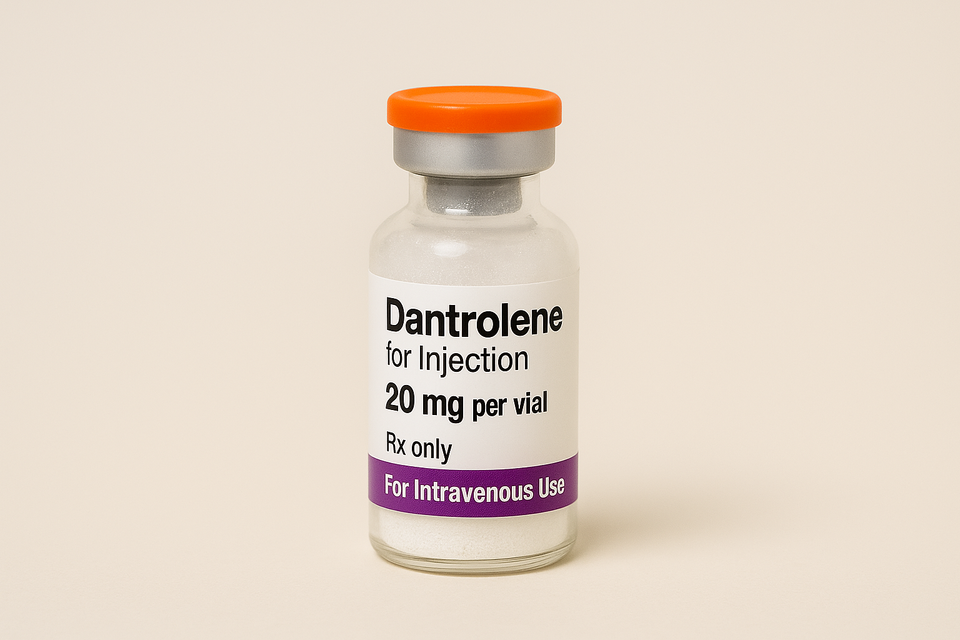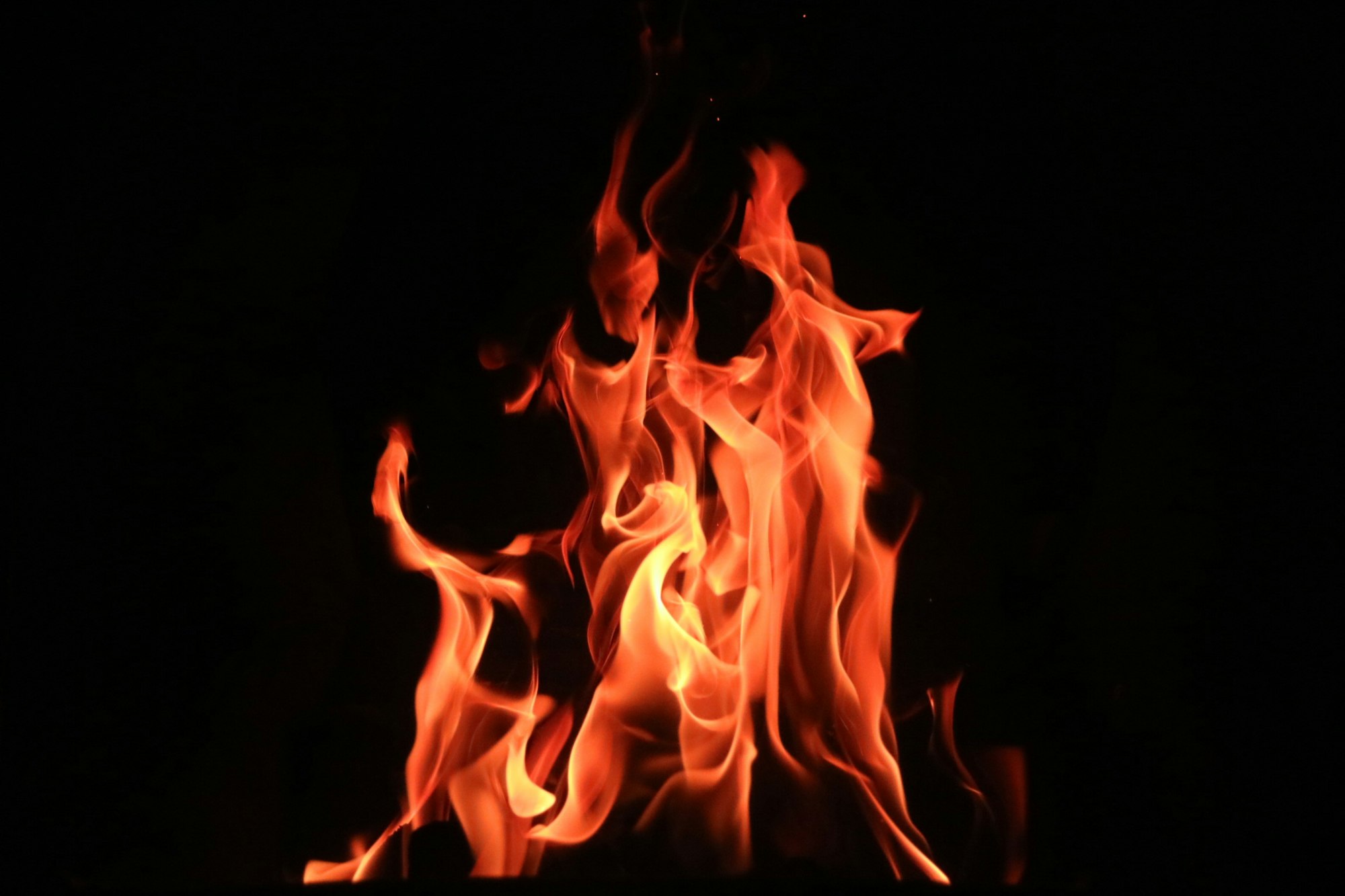Dantrolene

If your patient currently has malignant hypothermia, give 2.5 mg/kg IV dantrolene right now.
Then we can have a talk about your priorities during an anaesthetic emergency.
What is it?
Dantrolene is a skeletal muscle relaxant in the family of hydantoin derivatives.
So it's similar to phenytoin in its class, but completely functionally different.
In 1974 Dantrolene was approved for use in humans, and brought the mortality of malignant hyperthermia down from 80% to less than 5%.

What does it do?
Dantrolene selectively induces skeletal muscle relaxation, but rather than acting at the neuromuscular junction like its red-labeled relatives, it acts within the muscle tissue at the ryanodine 1 receptor (RYR1).
This receptor is found in the membrane of the sarcoplasmic reticulum.
By inhibiting this receptor, it prevents the calcium-induced calcium release required for muscle contraction, and reverses the catastrophic calcium cascade seen in malignant hyperthermia.
It doesn't cause paralysis but does cause weakness by reducing excitation-contraction coupling.
Cardiac muscle has RYR2 and therefore isn't affected by dantrolene, which is mightily convenient for us not killing the patient while managing the condition that is trying to do just that.
Some things to know
Preparation and Dose
Comes as 20mg of orange powder for reconstitution with 60ml water for IV injection.
- 2.5 mg/kg initial IV bolus dose
- Repeat as required every five minutes
- Up to a maximum of 10 mg/kg
Maintenance (if needed)
- 1 mg/kg every 4-6 hours or
- 0.25 mg/kg/hour infusion
It takes an age to dissolve, so get lots of hands on deck and get reconstituting fast.
Side effects
- Muscle weakness
- Respiratory depression
- Drowsiness
- GI side effects (nausea, diarrhoea)
- Phlebitis at injection site
- Hepatotoxicity with chronic use
Contraindications
- Known allergy to dantrolene (duh)
- Severe liver disease is a relative contraindication
If you're treating MH, forget the contraindications and give it.
Absorption and distribution
Absorption
- Give it IV
- There's an oral version for chronic muscle spasms
- If you're interested the oral bioavailability is around 70%
Distribution
- 0.5 - 0.7 L/kg
- 75% protein bound
- pKa= 7.5
- Poorly soluble in water
- Very fat soluble
Metabolism
- Liver
- CYP450
Excretion
- Renal
- Elimination half life of 4 - 12 hours
Here's our post on malignant hyperthermia

Here's a poem from our favourite AI Poet
In theatre's depths, where patients lie,
A beep goes rogue, the temp climbs high.
The gasman pales, the surgeon screams —
“Is this… malignant hyper-what-d’you-mean?!”
A twitch, a rise, a CO₂ peak,
You feel the sweat run down your cheek.
The heart is fast, the tone is tight,
The muscle’s gone from soft to fight.
You shout, “It’s MH! Dantrolene!”
Then look around — a quiet scene.
“Has anyone seen the orange stuff?”
The ODP just shrugs, “It’s in the rough…”
You find the box, you shake with fear,
“Why are there so many vials in here?!”
You reconstitute with sterile water —
Not saline (lest you risk manslaughter).
Dose is 2.5 mg per kilo,
Repeated if the signs still show.
Max out at ten, if needed more,
(You’ll need a trolley. Maybe four.)
The ryanodine it gently blocks,
Calms calcium's chaotic shocks.
It doesn’t touch your heart or gut,
Just stops those muscles clenching shut.
Beware the side effects it brings:
A weakish arm, some floppy limbs,
Phlebitis red, the odd collapse —
But frankly better than a lapse.
It’s orange, loud, and FDA blessed,
It saves your bacon under stress.
So next time MH starts to scream,
Just whisper, “Steady... dantrolene.”
